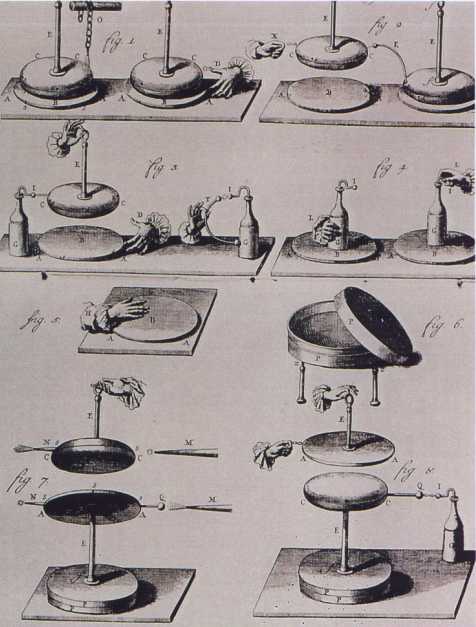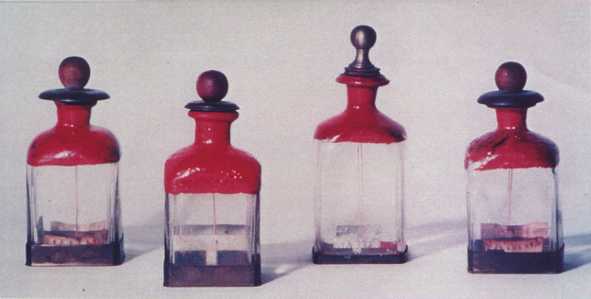
Volta starts his career as a so called “electrifying physicist” with a paper in Latin where he criticizes the theories of his time. In 1775 he invents the electrophorous, an instrument which utilizes electrostatic induction to produce electricity, without rubbing. In 1782 he describes an instrument capable of detecting very small quantities of electricity, the microelectroscope or “condenser of electricity”. The apparatus consists of two conducting disks separated by a thin insulating layer. The upper disk is placed in contact with a charged body, while with a finger one touches the lower disk. The contacts are removed, the upper disk is raised and one observes with an electroscope that it is charged.
Later Volta modifies the apparatus, connecting it directly to an electroscope. In order to explain how the instrument works, Volta uses the concept of electric capacity and writes a relation between voltage, capacity and quantity of charge, the basic formula of electrostatics. Convinced that “nothing good can be done if one does not quantify the measurements”, Volta modifies the electroscope and makes measuring instruments, linear and universal, of the electric potential.
1) The condenser.
2) Electrometers.
3) The electrophorous

